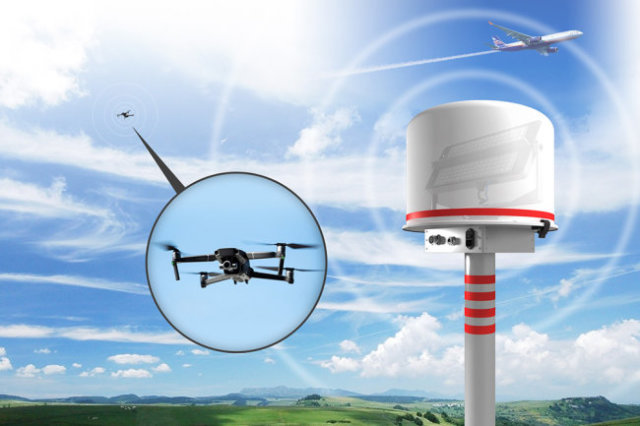A small-sized radar station (MRLS) "Volna" has been developed, designed for round-the-clock and all-weather search, detection and tracking of ultra-small drones.
Along with large strike unmanned aerial vehicles, very small drones performing reconnaissance functions pose a major security threat. Especially multicopters. When a helicopter-type drone freezes, it is impossible to detect it with classical radars using the Doppler effect - it becomes invisible. And if we take into account that such apparatuses have a very scanty effective reflecting surface, then it is really almost impossible to detect them. Suppose an attacker was able to bring a multicopter equipped with a whole complex of espionage equipment to some strategically important object and launch it under the cover of night. Such a copter will rise to a great height, where it is impossible to visually determine it and will begin to collect information. He will not transmit it on the air, and will also go down at night and transmit the collected data to his master.
Today it is almost impossible to catch such a spy. But a group of young specialists under the leadership of General Designer Alexei Tsarkov was able to develop technologies that allow you to instantly fix an uninvited unmanned guest. Even motionless.
According to the developers, the three-coordinate multipath active antenna system created by them can significantly improve the technical characteristics of small-sized radar stations. Already today, we can talk about the following advantages: round-the-clock all-weather operation; automatic notification when a UAV is detected; obtaining results in real time; integration with UAV suppression systems. It is important that no special permission is required for the use of radar equipment. The instrumental detection range of a suspicious target is 5 km. Detection of small UAVs with an EPR of 0.01 sq.m at a distance of 1 km. The radar complex provides measurement of the range, azimuth and speed of the target, its constant auto-tracking. There is also an automatic notification function when a threat occurs. After detection and recognition, the MRLS sends an instant alarm signal to the security point and continues tracking the target. The operator's screen displays the current location of the UAV and the characteristics of its flight.
The Volna MRLS is capable of operating around the clock with minimal electricity consumption. It is intended for use as part of a single complex of technical means of the security system, including means of detection, identification and tracking of UAVs, means of countering unauthorized penetration of drones into the protected area. Such an electronic station fits perfectly into the concept of a "Safe City".
Sergey Ptichkin

